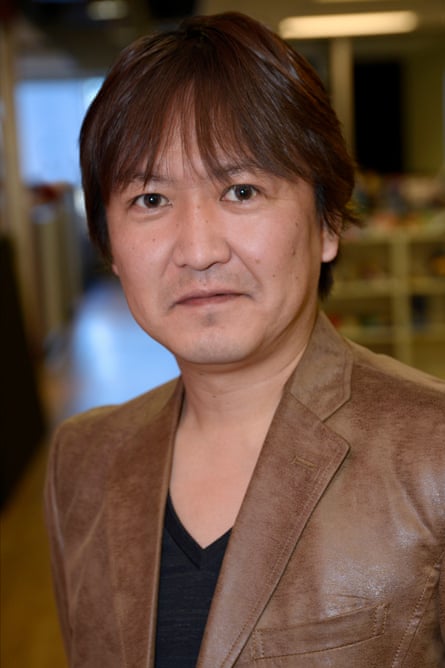The creators of Sonic the Hedgehog reflect on bringing him back to his iconic 90s roots, describing him as cool, timeless, and mysterious.
F
This month marks the first time since 1992 that a new Sonic the Hedgehog game and a new Mario game have been released. The sassy hedgehog has also experienced a resurgence in popularity on the big screen, with Hollywood films featuring Idris Elba and Jim Carrey. However, in terms of video games, while Mario has continued to impress with his graceful leaps and sprints through decades of exciting adventures, Sonic’s appearances since his peak in the 1990s have been inconsistent. From a poorly received sword-wielding game for the Wii to the confusing storyline of Sonic the Werehog in 2008’s Sonic Unleashed, the hedgehog has gone through somewhat of a midlife crisis.
Like all struggling artists trying to recapture their former glory, Sonic’s caretakers have taken their hero back to his roots. With their new release, Sonic Superstars, Sega has rejected the sprawling open-world freedom of last year’s Sonic Frontiers and returned to the side-scrolling of old. And who better to help rediscover the unbridled joy of the blue blur than designer Takashi Iizuka, one of the creative leads on such beloved entries as Sonic 3, Sonic & Knuckles and Sonic Adventure 1 and 2.

Iizuka happily recalls, “Those games were truly exceptional, not just because they were incredibly well-made, but because they were either grand in scale or marked a significant milestone for the franchise.” He continues, “Sonic 3 and Sonic & Knuckles truly perfected the classic Sonic gameplay and brought it to a whole new level. And of course, Sonic Adventure was an incredible game that also happened to be the first fully 3D Sonic experience. However, the most important aspect is always capturing the essence of Sonic and creating a distinct and unforgettable experience, which those games certainly achieved.”
However, in order to truly embody the essence of the classic games, it is necessary to have the original team. For Sonic Superstars, it was essential to capture the iconic gameplay of the Mega Drive era. To achieve this, Iizuka sought the expertise of renowned game designer Naoto Ohshima. As the character designer for Sonic’s debut game and a key contributor to all releases in the 1990s, Ohshima’s absence from Team Sonic since Sonic Adventure in 1998 was a significant loss. Bringing him back on board was crucial in reviving the nostalgic charm of the franchise.
Iizuka expresses his appreciation for Ohshima-san’s contributions to Sonic Superstars, stating that it’s wonderful to be working together again like an old family. He believes that once you’ve worked on a Sonic project, it’s difficult to completely let go of its charm. It will always hold a special place.

Although it has a strong background, the introduction of the brand-new Superstars caused some surprise. Following the positive reception and success of Sonic Mania in 2017 (which was developed by different studios), many fans were anticipating a sequel from Sega. Iizuka acknowledges this unexpected reaction, stating, “I can see why it may have been unexpected. Sonic Mania was highly favored by fans, and we are proud to have revisited the classic pixel Sonic experience with that game. However, with Superstars, our goal was to set a new standard for 2D Sonic games by elevating Sonic’s familiar gameplay with modern 3D graphics.”
Collect Superstars, and it is the strongest competitor to the Mario franchise in recent years. Combining familiar locations with new levels to race through, it strikes a clever balance between retro and contemporary gaming styles. The game showcases a level of creativity and lightheartedness that is not often seen in modern Sonic titles. I wonder, to what extent were Mario’s recent games an influence on Superstars?
Iizuka stated that while they do take notice of other titles within the same genre, their main focus is on finding ways to maintain the Sonic franchise’s sense of novelty. He believes that achieving this involves incorporating elements of the Classic Sonic experience, such as fluidity, momentum, and realistic physics, into a game featuring modern 3D graphics. This is important in order to meet players’ expectations. However, this seemingly straightforward task can be quite difficult to perfect in the world of game development.

Although Superstars has not received glowing reviews, it has still received positive feedback from both fans and critics. This is a significant improvement for a series that has faced many challenges. Many online fans have become accustomed to what is referred to as the “Sonic cycle”: anticipation for a new game’s release, followed by disappointment upon playing it. Iizuka, who was rehired by Sega to defend against underwhelming Sonic games, is well aware of this trend.
“After my involvement in the development of Sonic Adventure 2 in the United States, numerous Sonic games were created in Japan by various development teams. This resulted in a diverse range of titles, but also varying levels of quality,” he stated diplomatically. “To address this issue, I began working as the producer for all subsequent Sonic titles, starting with Sonic Colors.”
Disregard the newsletter advertisement.
after newsletter promotion
Iizuka has been fixated on perfecting platforming throughout his career. While players can easily judge if a side-scrolling game “feels” right, it is a challenging task for developers to accomplish. According to Iizuka, the top priority is always gameplay and ensuring that the game has the right feel. He emphasizes the importance of speed and momentum in creating this feeling. He believes that there are various ways to approach a platformer, whether it be a difficult and precise game or a more fluid and effortless one. Finding the balance between these two approaches is crucial for creating a successful game in this genre. Ultimately, the satisfaction and enjoyment of progressing through each level, the unexpected surprises, the character’s fluid controls, and the thrill of actually playing the game are what make it all worth it. A lot of effort goes into eliciting these reactions from players.

Although Sonic’s video games have had mixed success in the 21st century, the iconic blue character has become a sensation in Hollywood. Sonic’s second movie has become one of the top-grossing video game adaptations, but interestingly, it was recently surpassed by the Super Mario Bros Movie. For Iizuka, this is a peculiar but ultimately motivating experience.
“It is wonderful to witness the success of Sonic and the introduction of new fans to the franchise,” he expresses. “The transition of video games into movies has a rich and complex background, and success is not always guaranteed. However, our partners have done an exceptional job in capturing Sonic’s unique personality and charm.”
Despite spending decades with Sega’s mascot, Iizuka isn’t going anywhere soon. “There is so much that can still be done,” he believes. “As a character, Sonic is cool and likable, timeless and enigmatic. It’s not often that you come across a character like that. One who looks equally at home in history as he does in the future. Imagination and creativity are infinite, I always say. We plan to continue to surprise players for many years to come.”
Source: theguardian.com
